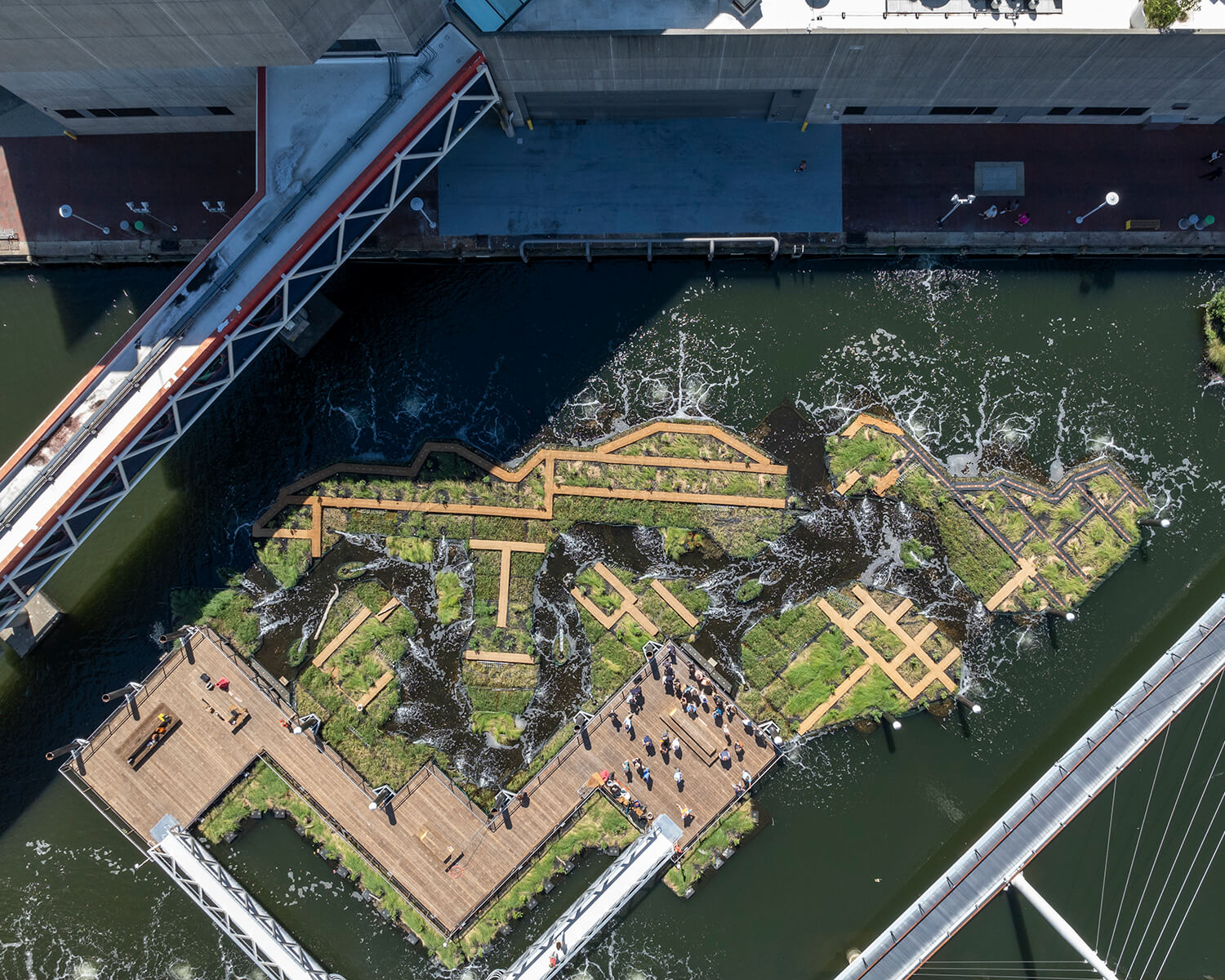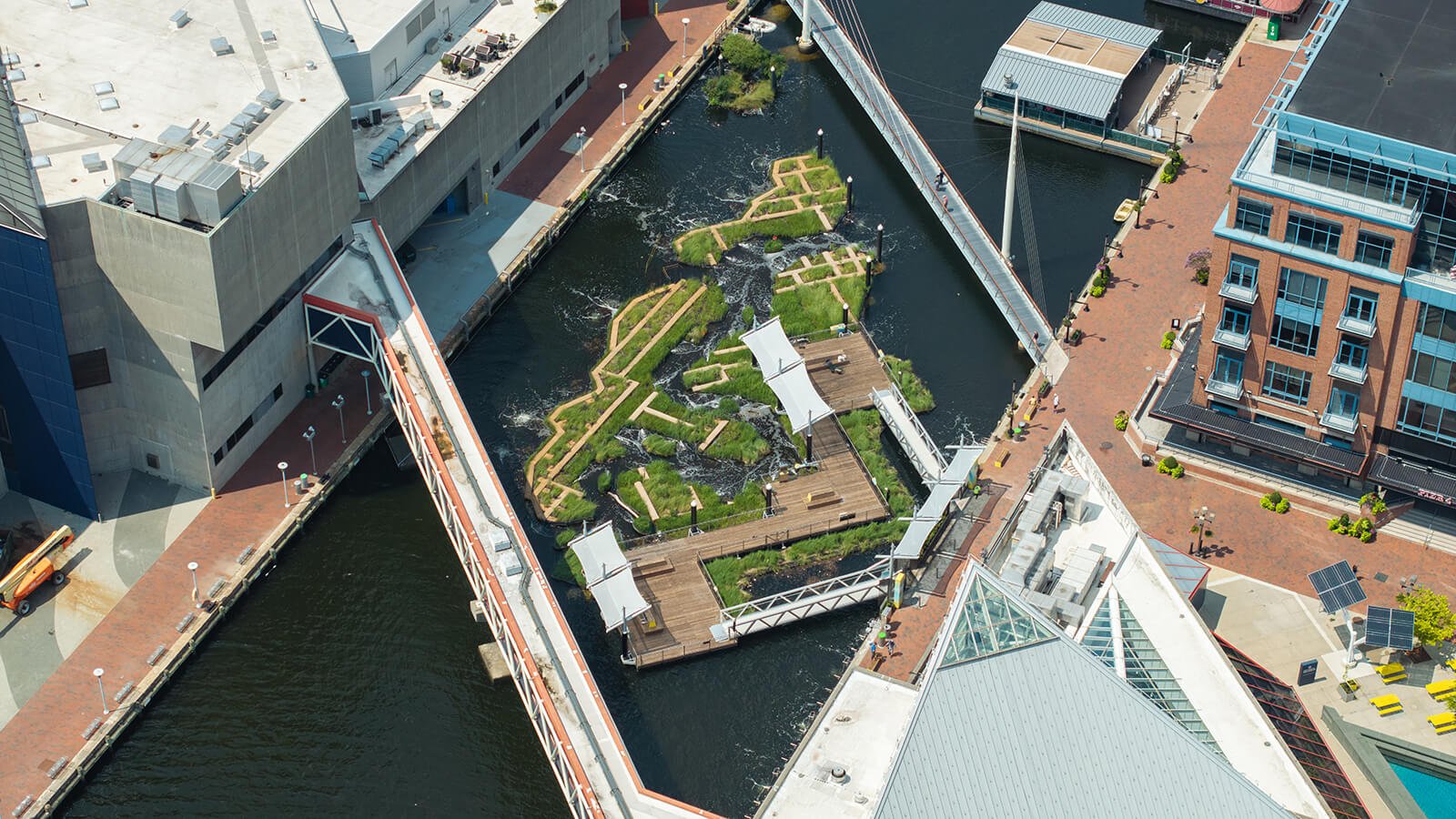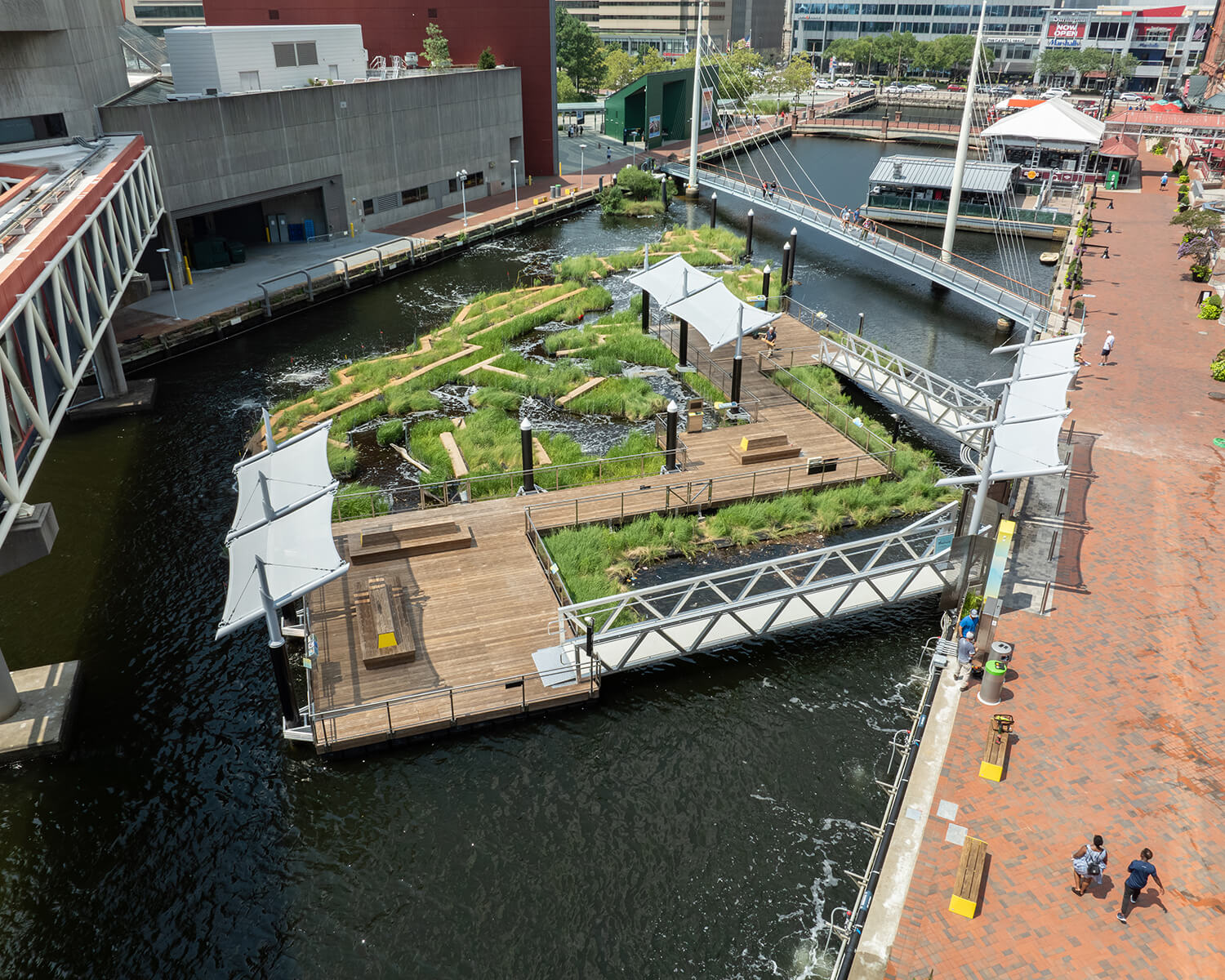
For 43 years, the National Aquarium has been a Baltimore institution. Unveiled in 1981 as part of an urban renewal effort on the city’s waterfront, the public non-profit is now the most popular tourist destination in Maryland, drawing some 1.5 million visitors a year. Guided by a mandate to inspire the conservation of aquatic habitats and promote sustainability, the facility boasts over 17,000 specimens and 750 species. Until recently, the stunning biodiversity — and sense of adventure — stopped at the front door: The aquarium was framed by hard concrete quays and seemingly lifeless post-industrial waters. But now, something is stirring between the piers.

Opened in August, the 929-square-metre Harbor Wetland artfully extends the museum’s program into the public realm, creating a community space that doubles as a free outdoor exhibition. Informed by a master plan for the aquarium developed by Studio Gang and designed by local architects Ayers Saint Gross, the water park is reached via a pair of steel truss bridges that move from the existing boardwalk to a new zigzag-shaped wooden pier floating in downtown’s Inner Harbor.

Surrounding this platform, some 32,000 grasses and shrubs recreate Baltimore’s former salt marsh shoreline. Roots extending down into the river will help to filter out pollutants, gradually improving the quality of the water and supporting a richer ecosystem. As marine life moves in, educational programs run by the aquarium invite visitors to admire the action first-hand from the Harbor Wetland’s viewing platform. “At the last tour I attended, they pulled an eel right out of the water to explain to people, ‘This is what’s living in this habitat,’” says Ayers Saint Gross principal Amelle Schultz. Over the summer, pumpkinseed sunfish have also been spotted in the water, and snails and blue crabs have found shelter in the tall cordgrass.

1Supported by a mechanical air and water filtration system, salt marsh greenery grows on recycled plastic fibre mats. These are attached to a submerged metal grate held in place by an arrangement of pontoons.
2As plants mature, staff can add air into the pontoons to increase their buoyancy and balance the extra biomass.
3Airlift pipes pump compressed air into the wetland to circulate water through the shallow channel.
The project is intent on becoming a comfortable human habitat, too — hence the addition of benches and shade structures. “We wanted to create a space that layers in different types of experiences,” Schultz says. “Folks can come and sit down for 15 minutes during their lunch hour and just relax.”

A Wetland Landscape Revives the Baltimore Harbour
A floating water park creates an educational ecosystem on Chesapeake Bay.
